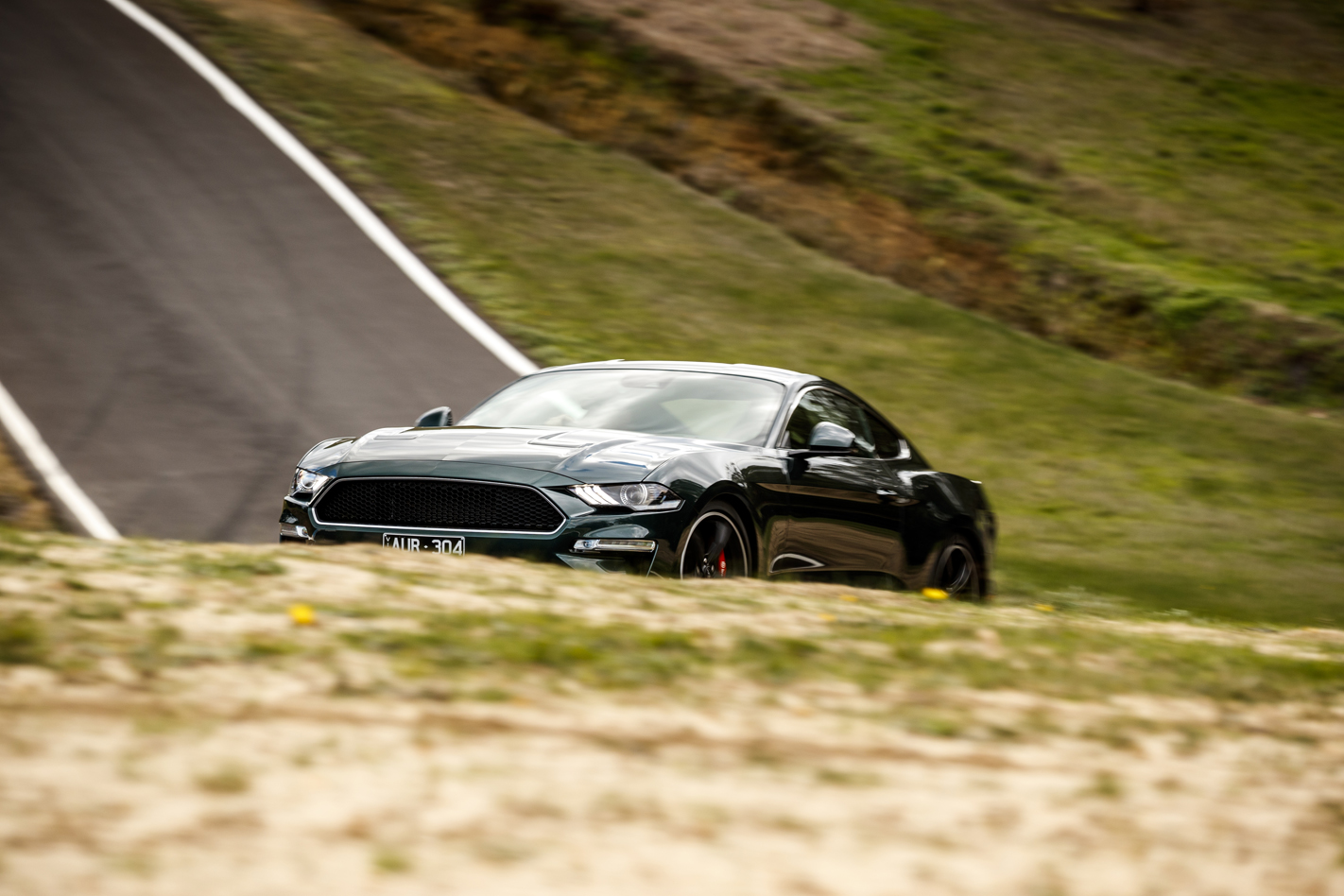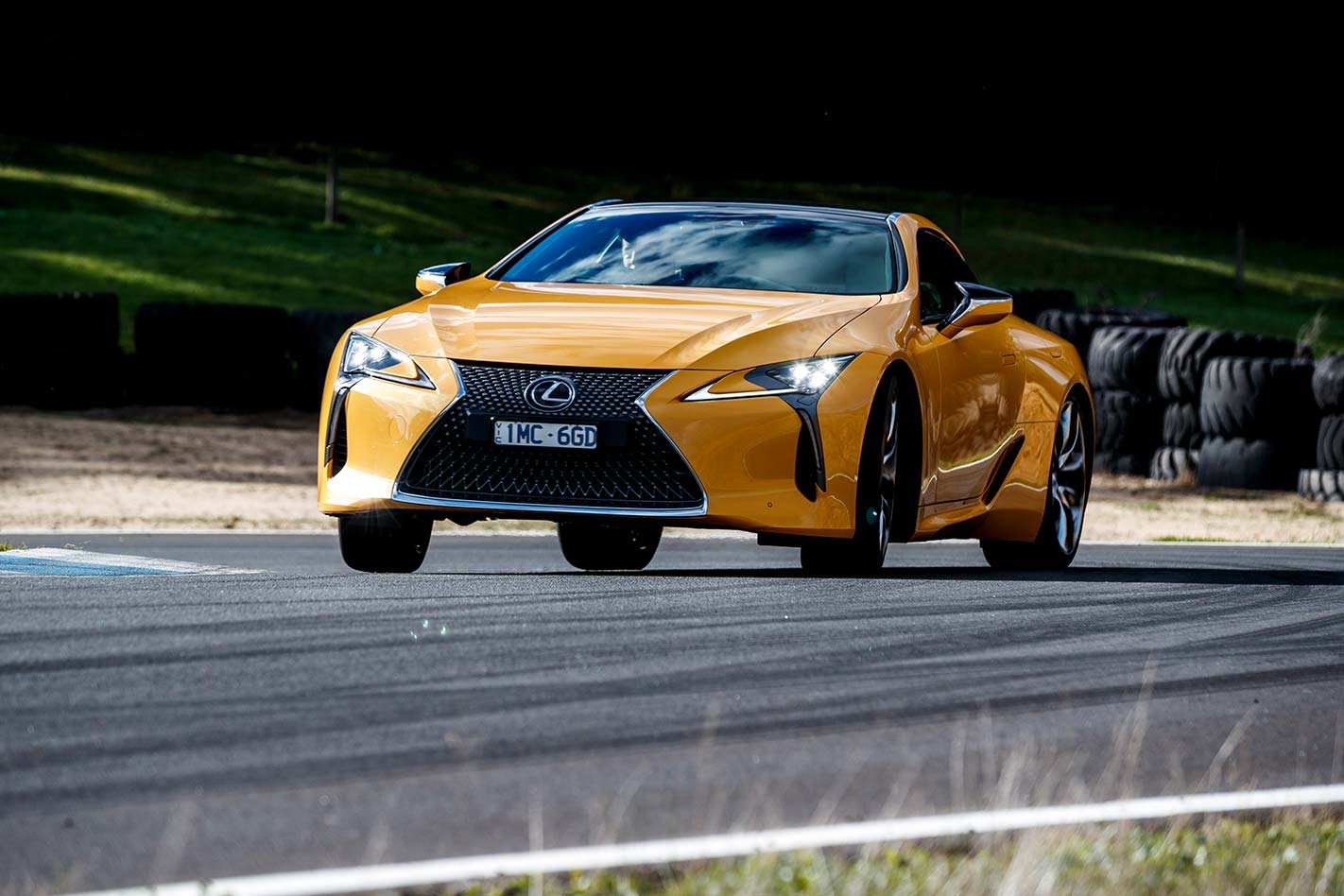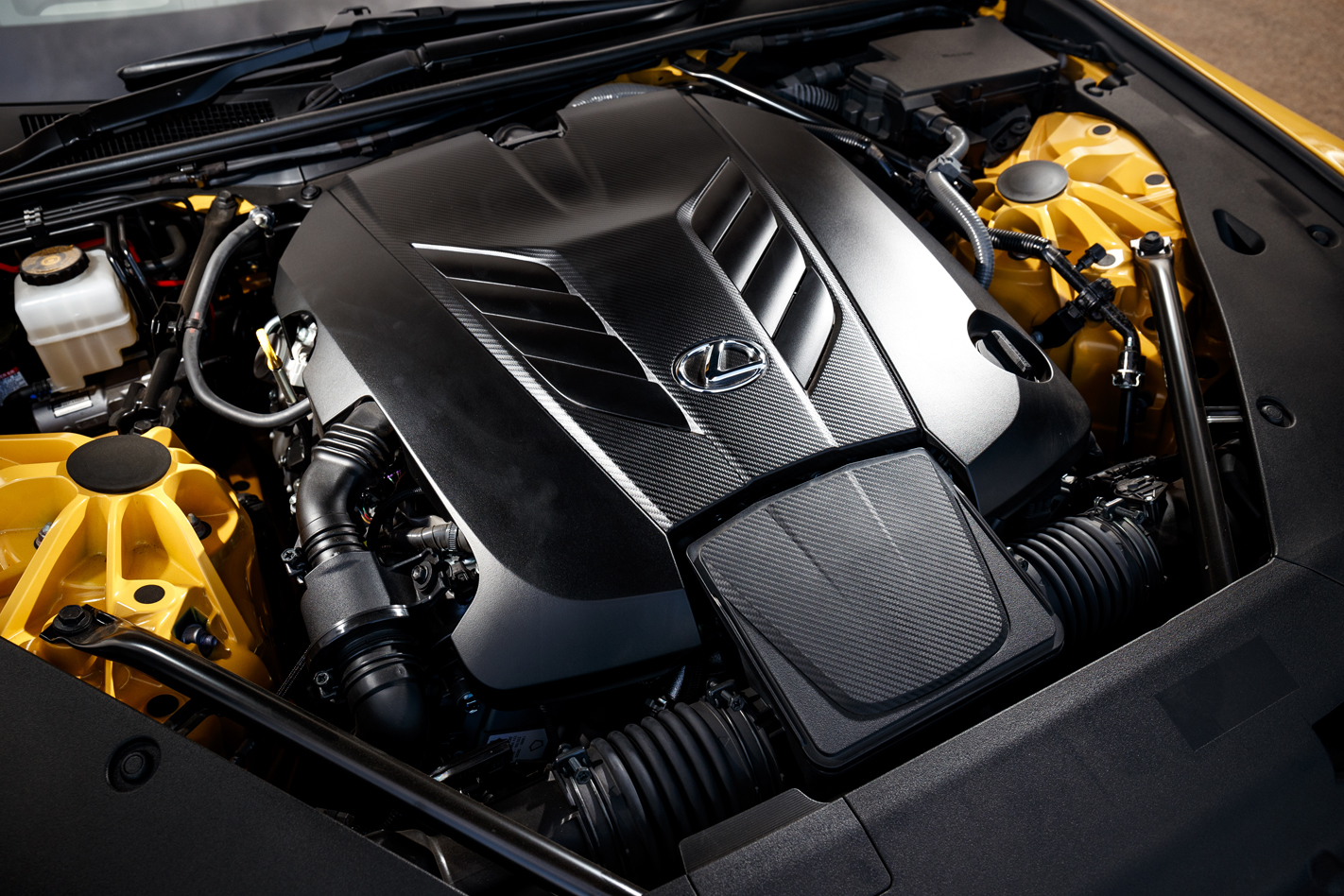Before we begin, a disclaimer directed to all lovers of gastropod molluscs – no ‘snails’ were harmed in the making of this feature.
It’s important we establish that the Wheels test team loves a good turbo. For starters, none of us has ever felt the twist of a Newton metre we didn’t enjoy, and the turbo has been responsible for countless significant transformations across every automotive segment. This ingenious exhaust-gas-driven induction air pump has helped bestow greatness on so many cars, to the point now where Mercedes-Benz and BMW, just as two examples, are so enamoured with the turbocharger that both German giants refuse to build an engine without one.
But our love can only extend so far. Because equally well established is the purity and intimate driver connection only a high-performance atmo engine can deliver. Which, of course, is what this feature is all about. It’s a celebration of free-breathing brilliance; of having to chase revs when really demanding speed, having a throttle pedal seemingly hard-wired to your synapses, and revelling in an open-lunged soundtrack that can only come when there’s no impeller between the exhaust manifold and the tail pipe.

In bringing together our field, we tried to gather representatives of disparate engine designs and characters. Our field of six spans just over $40,000 to well north of $400,000; from four cylinders to 10; and from 135kW to nearly four times that figure. But as this celebration will prove, an atmo hero is not ordained by cylinders or kilowatts – it’s by the number of hairs that stand up on the back of your neck when the tacho swings past the yard arm.
So, time to head for the hills – the ‘Haunted’ ones at Bryant Park, Moe, and the ones climbing out of the Latrobe Valley. Buckle up.
Atmo Hero #1: Porsche 911 GT3 RS
TO DEBATE THE merits and net cost benefit of the GT3 RS over the already sublime GT3 is both pointless and churlish. If you want the closest thing to a Carrera Cup racing car for the road, then this is it. If you want to understand why an atmo flat-six deserves to live forever, this is also your evidence right here.

Fact is, you could adhere to a self-imposed redline of 7500rpm and still feel you’re driving one of the world’s greatest atmo engines. Oily, eager, and ultra-responsive, it has a breadth to its tonal qualities and a linearity to its delivery that really is sublime. But once you’ve tasted that final lunge to the 9000rpm redline, it’s like a narcotic you continually crave. Think of those wildlife documentaries where you watch the cheetah explode from the crouched position in pursuit of the little impala, every sinew stretched to the limit as the predator’s acceleration phase becomes a true arbiter of life and death. Now think of the final lunge, when the big cat hurls itself at the throat of its prey and sinks its teeth through flesh and spinal column. That’s kinda like the moment when the GT3 RS’s engine rips from 7500 to that 9000rpm kill zone. At max revs, with the sports exhaust in the open position, an in-cabin decibel meter would read 102db, a whopping 14db louder than a Carrera S at its redline. But it’s the shift in pitch at that top end, like a butcher’s bandsaw having an argument with an aluminium ski pole, that makes you feel truly alive. Glance down if you dare, and spot the tacho needle flicking crazily across the white face, like an epileptic Swiss watch. Magic.

Of course, there are a few inherent compromises that make perfection elusive on the road. The lack of sound deadening and size of the rear tyres mean the aural qualities are a bit discordant at urban speeds. The track-focused chassis tune can buck and spit over mid-corner lumps on really gnarly Aussie B-roads. But the steering remains a thing of wonder in your hands, constantly feeding information about surface nuance and grip levels while possessed of an almost supernatural ability to read the road camber without tramlining. The brakes, too, are a constant pleasure to punish. Even the fact that the cabin is looking dated in the face of the new, tech-rich 992 is hardly cause to sook. More than mere atmo hero, this last-of-the-991s GT3 RS is both berserk warrior and legend to the end.
Atmo Hero #2: Mazda MX-5
NO-ONE disputed that the changes Mazda engineers wrought on the 2.0-litre engine late last year were transformational. The move to bigger valves, more aggressive cams, higher compression, improved injection and a freer-flowing exhaust were straight from the atmo tuner’s handbook, but gave this delight of a driver’s car a distinct personality shift. There’s both a usefully stronger top end, and more rev-range headroom to work with, which was important on a bunch of corners at Haunted Hills which dictate you hold the top of second rather than waste an upshift to third for only a few milliseconds.

On the road, Enright made the observation: “Where the original ND’s on-limit dynamics could feel a little one-dimensional, the extra power of the updated engine gives you far more options. It now carries speed effortlessly cross-country.”
But we’re here to anoint atmo heroes, and as good as the new engine is, the Wheels crew broadly agreed that its extra strength and rev ceiling served as a gateway to better exploit the chassis balance, rather than being a thing of wonder in its own right. It sounds fruity enough in terms of induction slurp, but a switchable exhaust to really uncork some sonic satisfaction from the tailpipe would be hugely welcome. And none of us could overlook the fact that in the 2.0-litre four-cylinder space (at an admittedly much higher price point) we’ve had true superstars like the F20C engine from the Honda S2000, which was ripping out 184kW from the same capacity at 8800rpm two damn decades ago.

As a package to really tweak a keen driver’s go-spot, delivering brilliant rear-drive chassis engagement via quick, tactile steering combined with open-air sensory stimulation, the MX-5 is touched by greatness. But true atmo-hero status remains just out of reach.
-Ash Westerman
Atmo Hero #3: Chrysler 300 SRT
Demonstrating how wide the Church of Free Breathers truly is, we jump from a petite two-door roadster to a beefy sedan with double the cylinder count, and more than three times the capacity. Welcome, then, to the Chrysler 300 SRT.

Appearing here in Core spec, priced from $65,000, the 300 SRT is the most affordable V8-powered sedan you can buy, ostensibly last man standing in the space vacated by the Holden Commodore and Ford Falcon.
Under the 300 SRT’s bonnet is a 6.4-litre Hemi punching out 350kW and 637Nm, codenamed Apache, evoking the Boeing-built attack helicopter. It’s one of the largest atmo engines you can buy, only bested by the 6.5-litre V12s of Lamborghini and Ferrari.
The first hint at the Hemi’s character is the idle, which is satisfyingly lumpy, and tinged with a metallic note. But it’s between 3000rpm and the 6100rpm redline that it comes alive, bellowing out a deep, animalistic roar.
Driving the 300 SRT is a surprising delight. The Wheels team expected something with such an overt American style to fall short on the twisting Haunted Hills circuit. Oh, how we were proven wrong. The steering is too light in Street and Sport modes, but the weighting in Track matches the bulging-bicep character of the 300 SRT, and the front end is surprisingly direct and trustworthy.
With Track mode engaged (which retains the thinnest of ESC safety nets), the SRT allows armfuls of lock as it performs languid, almost balletic, power slides on corner exit thanks in part to a Getrag limited-slip diff. Of the two Americans present, the 300 SRT was the one which we preferred on track. No, we weren’t expecting that either.

While everything about the 300 SRT seems as American as going bankrupt from medical bills, it’s actually got a fair-dinkum Aussie spirit. You can’t buy the SRT in North America; the only markets in which it’s sold apart from here are New Zealand and the Middle East. So, unlike the Apache gunship, it’s not a true American gunslinger, but with its big V8 heart, and endearing dynamic character, it’s a true-blue atmo hero in our books.
-Cameron Kirby
Atmo Hero #4/5: Ford Mustang Bullitt & Lexus LC500
Much like the brutish four-door American, it’s hard not to become infatuated with the old-school muscle-car ethos at play in the Bullitt Mustang. Press the starter button on a cold morning and you’ll certainly get to say good morning to the neighbours. Yes, you can scroll through different exhaust modes, but muffling the 5.0-litre Coyote V8’s bark seems wrong. Burbling away on a cam-heavy idle, this movie-star throwback feels every bit $74K special, even if that is an $11K premium over a manual GT.

Finished in Dark Highland Green and rolling on 19-inch aluminium Torq-Thrust wheels, the Bullitt has a demeanour all of its own. The deletion of the pony from the front grille and the addition of a gunsight Bullitt motif at the rear are polarising but unavoidable. The blacked-out cabin features green stitching and lighting, while a dash-mounted plaque highlights the fact you’ve bought a Bullitt. The new digital instrument cluster also continues the green theme, while the supportive Recaro seats are worthwhile additions.

So that accounts for some of the Bullitt’s extra cost; the rest centres around mechanical goodness (see sidebar p77). It makes a rowdy racket, one distinct from the GT, as the Bullitt gains an intake roar and a maniacal overrun from the active exhaust. In its upper reaches, racing towards its 7500rpm cut-out, the timbre changes, introducing an addictive crescendo. Enright quips that it isn’t all for ‘look-at-me’ fanfare. “The Mustang is just the greatest thing to burble around in. The engine’s got a lovely, cross-plane ‘whomp-whomp’, and for some people, that’s all they want from a V8,” he says. Judging by punter reactions, Enright’s probably right.
MagneRide adaptive dampers and Michelin Pilot Sport 4 S tyres are standard, affording the Bullitt the duality of compliance and composure. Except, the latter comes with a level of unsettling pitch from the rear, while the steering remains a bit vague, and the over-servoed brake pedal continues to be a bugbear. Still, keep it within controlled limits and the Bullitt shines. It rewards with unassuming pace and a crisp, precise shift action from the six-speed manual that’s in contrast with the Mustang’s often unsophisticated image. The cue-ball gearknob is a brilliant combination of form and function.
Tall gearing (you can reach 134km/h in second gear) lulls you into thinking the ’Stang is slower than it actually is. Sometimes the plot can take a little too long to thicken. A shorter final drive and the gearing from the EcoBoost would help. It’s one of the only cars here that induces forced-induction thoughts, leading some to question whether it would improve the experience.

Overall, the Bullitt is best enjoyed at seven-tenths – and far away from a racetrack. The Mustang’s USP involves cruising along the shoreline with the windows down, basking in the sun with that enticing V8 rumble as the perfect travel companion. Come to think of it, the Lexus LC500 does a version of this, too. But much more as well.

It’s a face of child-like joy and unbridled abandon you don’t normally associate with a Lexus driver, yet Enright’s grin is beaming. If it weren’t for eight pulsating cylinders screaming towards their 7300rpm cut-out, you’d be able to hear him chortling from outside the lavish cabin. He’s mid-drift at Haunted Hills and the amount of slide angle and accompanying tyre smoke from the 21-inch rear hoops juxtaposes this road-going concept car’s assumed persona.
The LC500 is supposed to be a GT cruiser, not a track-focused sports car. Okay, the latter isn’t exactly true either, but there’s no questioning its surprising on-track prowess. It feels like an event. The naturally aspirated, 4969cc, 90-degree bent-eight more than justifies its inclusion here – especially when it delivers 351kW (7100rpm) and 540Nm (4800rpm) while producing such an arousing sound.
However, even among this company, the LC500 is acoustically special. Enright, in a brief moment of maturity, sums it up best: “It sounds like it’s made of exotic materials, like the whole thing is made out of titanium.” That’s the appeal of the LC500 in one. With its Yamaha-tuned, high-flow cylinder heads, titanium inlet valves and dual-length intakes, the engine complements the theatre of the dramatic exterior design.
The LC matches purity and polish with a hint of animalism. Ears prick whenever it’s on song, especially when the slick 10-speed torque-converter auto blips hard on downshifts or bounces mercilessly off the hard cut. It’s a landmark transmission.

Substance is easy to find. A development on the RC and GS F power unit, the 2UR-GSE raises its compression ratio to 12.3:1, can operate on an Atkinson cycle for reduced consumption, and shifts the LC500 to 100km/h in 4.7 seconds. Yet the on-paper numbers don’t do justice to the LC500. Yes, it needs revs on board, but optional rear steering, while requiring an adjustment period, seemingly shrinks the 4770mm-long body. Hustle hard and the opulent coupe rewards.
Turn down the wick to Comfort mode and the LC500 shows a brilliant loping, touring ability – its ride quality belies the attractive, oversize chrome wheels, road noise is adequately quelled, and you can really sink back into the well-bolstered seats. Apart from the clunky infotainment interface, the interior is a feast for the senses in all the right ways. In terms of an ownership proposition, Inwood sums it up best: “If you bought one, you’d love it to bits.”

So the $205,200 LC500 isn’t style over substance. Lexus has created a different kind of GT coupe, one dripping in luxury and oozing a feel-good atmo nature, and where adding forced induction would surely detract from its unique brilliance. Crucially, you don’t have to search far below the surface to uncover its driver appeal – a trait shared with the Audi R8…
-Trent Giunco
Atmo Hero #6: Audi R8 V10
The dawn is a thousand peachy pastels, mist sitting on the valley paddocks, the road disappearing to a vanishing point marked by a queue of bluegums. The Audi R8 rumbles from a side road, straightens, pauses, and then morning certainly breaks. The 449kW/560Nm V10 shrieks into life, all discordant minor keys at the top end, then a minim for the next gear and CRACK, the exhaust barks a sharp report. A flock of roosting starlings lifts from the trees as the Audi pulls the next gear, lifting as one in a busy murmuration. Out of nowhere a peregrine falcon plucks one as a meal from the periphery. I’m left gaping in amazement. Did that just happen?

The R8 ($389K plus options) seems to major in these moments. Like the sight of Westerman standing flat on the gas as he jets up a steep hill before me, the Audi squatting hard and launching skywards as if from a trebuchet. It takes a little while to realise that the child in me had always wanted to see a red mid-engined supercar driven hard, disappearing in a freakily cartoonish burst of acceleration, and now I’m in a Ford Mustang, banging the steering wheel in appreciation for witnessing just that.
When Audi first supplemented the original Type 42 R8’s 4.2-litre V8 with the 5.2-litre V10 back at the tail end of 2008, there were many who felt the smaller engine was the sweeter, more preferable unit. It was a more benign, tuneful thing, but the V10 brought attitude, spikiness and a welcome dose of exotica. It had links to Lamborghini, rather than something from an RS4 wagon.
On track at Haunted Hills, the Audi is a revelation. Its all-wheel drive allows you to drift the car four-square into tight corners long before the apex with minimal steering correction, and then just modulate that throttle pedal on the way out. There’s real precision to it and nothing affected or overwrought in the way it goes about demolishing a lap.
Jump into the Porsche and it’s all ridiculously physical and, after the Audi, a bit earnest. But here’s the strange thing. Out on the road, where you’d expect the lighter steering and delicate pedal weights to make life a whole lot more pleasant, you start yearning for the heft and involvement of the GT3 RS. Because you’re not hanging it out on the limit, you crave an interaction that you don’t always get from the R8’s fingertip controls.

The engine is always willing to oblige. Audi claims to be desperately searching for a way to keep the V10 in its model range, and it’s easy to see why. There’s a kinetic savagery to a good V10, something removed from the conventional rectitude of a V8 or a V12. Wrap it in Audi’s elegant tailoring and it makes one heck of a package. More than one of the test team preferred the R8 V10 Plus to the unhinged 911. Where the first R8 enjoyed a nine-year lifespan, this version, introduced at Geneva in 2015, isn’t going to enjoy anything like such an innings. We’ll miss it when it’s gone.
The same could be said for any of these other five powerplants. The saving grace for them is that they appeal to enthusiasts and, as Andreas Preuninger from Porsche has said, “The last car ever built will be a sports car; I’m sure of that.” In other words, there will always be a core of buyers who want a car with an atmo engine, or a manual gearbox or rear-wheel drive, or any combination of the above. You only need to read Alex Inwood’s drive of the Cayman GT4 in this issue for confirmation of that.
Now more than ever, we’re beginning to appreciate that modern forced induction engines can deliver too much of a good thing, elevating cars to a performance level that’s no longer either appropriate or, in truth, particularly engaging for road driving. As the atmo engine becomes rarer, we increasingly value its subtlety, purity and personality. Yes, the pool of powerplants devoid of a snail is small, but its constituents are now greater than ever. Breathe easy.
-Andy Enright
The engines
Chysler 300 SRT – Apache attack

Most of us know that ‘Hemi’ relates to the shape of the Chrysler V8’s combustion chamber, but why is this a good thing? According to SRT, the hemispherical shape helps decrease heat loss in the combustion phase, so fuel burns more efficiently. It also creates more room for the valves, allowing greater flexibility for both valve size and optimised position. Otherwise the oversquare engine is fairly conventional in terms of construction, using a deep-skirt cast-iron block with cross-bolted main bearing caps.
Lexus LC500 – Sound of the samurai

You may have spotted that the engine fitted here to the LC500 is the same 2UR-GSE unit in the RC F detailed in our Great V8s feature (Wheels, July). But it takes a more serious anorak to know that the LC’s version (URZ100) produces identical power to the RC F (351kW), but its 540Nm is 10Nm stronger, a result of software and exhaust changes. The exhaust is especially significant, because it transforms the V8’s character, giving the LC a level of cultured aural bite not evident in the RC F until you’re hammering it.
Mazda MX-5 – Tastier tuner

When we were awarding the ND MX-5 our 2016 COTY, we wondered whether the greater output of the 2.0-litre was worth sacrificing the sweeter, more rev-happy nature of the 1.5. Those arguments ended with the upgrades given to the 2.0-litre in Q3 of 2018. Changes targeted the trifecta – intake air/fuel delivery, combustion and exhaust – adding 17kW (for 135kW) and pushing the action higher. Peak power was at 6000rpm; it’s now at 7000, and the limiter doesn’t surface until 7700rpm.
Porsche 911 GT3 RS – Mader’s masterpiece
Here’s a tip: don’t bother taking the difference between the base price of the GT3 and GT3 RS ($90K) and working out the cost of the RS’s additional 15kW and 10Nm. You’d be missing the point. Fact is, the RS gains a titanium exhaust and a remapped ECU for its bump, indicating how good this engine is in GT3 spec. Prompting the question: where to from here? For the 992 GT3 RS, we hear the 4000cc flat-six will make circa-405kW at around 9000rpm. Yes please. The queue starts here.
Audi R8 V10 – High fives! Both of ‘em

In one minute at redline, the R8’s V10 is swallowing 22,100 litres of air, with the dry-sump circulating more than 85 litres of oil. Although 72 degrees is the ideal angle for a V10 engine because it creates a regular firing sequence, the Audi V10 opts for a 90-degree angle for stiffness, using a common-pin shaft with unsplit journals. In other words, it’s basically two straight-fives working in sync and firing alternately at 90 and 54 degrees of crank angle. And Audi has history with ear-splitting straight-fives.
Ford Mustang Bullitt – King of McQueens?

Given the revisions to the Mustang’s 5.0-litre V8 in Bullitt guise – intake manifold from the Shelby GT350 with an 87mm throttle body, cold-air intake with better air filter, and a recalibrated ECU – the increase of just 6kW (to 345kW at 6000rpm) with no extra torque seems marginal. It you really want your Pony car to kick in the stable door, you’d drop $17,995 (fitted) on the Roush supercharger kit from Tickford. It bumps outputs to 530kW/827Nm and doesn’t void the factory warranty. Only downside: your ’Stang is no longer an atmo hero.





